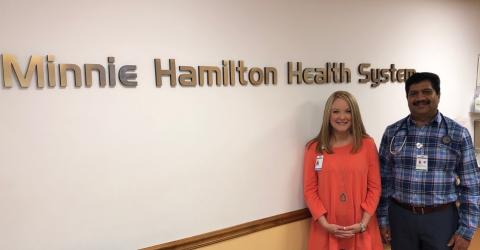Downloads
One Page Summary
(172.56 KB)
Related Articles
Learn about this critical access hospital's top accomplishments and current plans toward improved engagement in the transition to value-based care.
Speare Memorial Hospital (SMH), a critical access hospital located in Plymouth, New Hampshire, was one of six organizations selected to participate in the 2022-2023 Rural Health Provider Transition Project (RHPTP). SMH has seen RHPTP’s impact on their improved organizational culture and overall patient experience and is a wonderful example of a health care organization utilizing existing resources to bolster their many strengths and recent goals. The RHPTP team is excited to see what this transition to value-based care brings to their community and is so fortunate to celebrate their progress and commitment in the project. Read more about SMH's top accomplishments and current initiatives toward greater care coordination.
Effectively transitioning to a VBC payment system can be a challenge for many HCOs, therefore, State Offices of Rural Health (SORH) can be particularly vital partners in helping connect clinics and hospitals with additional tools, resources, and a valuable local perspective. Learn more about how one participating RHPTP HCO partnered with their SORH in 2024 to further their work toward a health system focused on value.
Coteau des Prairies Healthcare System: Engaging Patients and Staff on their Road to Value-Based Care
During their year-long engagement in RHPTP, Coteau des Prairie Health Care System (CDP Health Care) worked with RHPTP’s technical assistance (TA) consultants on financial and operational improvements, to develop a strategy and infrastructure to embed quality improvement into practice. Read more about CDP's top accomplishments and early outcomes made possible through their RHPTP participation.
Electra Memorial Hospital, a 19-bed, publicly owned critical access hospital (CAH) located in Electra, TX, was one of three organizations selected to participate in the 2021-2022 Rural Health Provider Transition Project (RHPTP). Read more about their continuing progress and top accomplishments since taking part in the project.



